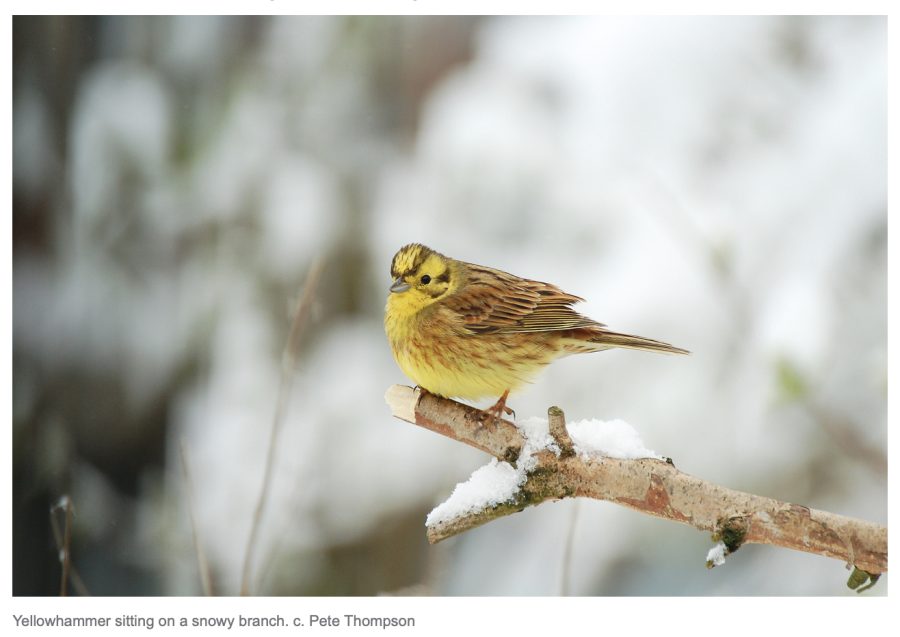The Game & Wildlife Conservation Trust’s Big Farmland Bird Count 2024 is underway.
This annual event encourages farmers and land managers to record the bird species and numbers on their farms. The count aims to raise awareness of the important role that farmers play in the conservation of farmland birds, and to measure the impact of the conservation work that many farmers and shoots carry out.
Last year, more than 1,700 farms took part, with more than 460,000 birds of 149 different species recorded across more than 1.5 million acres of farmland.
But it was not just farmers and landowners themselves who grabbed their wellies and headed off into the fields with their binoculars for half an hour during the first two weeks of February.
In Suffolk, Andrew was busy helping about a dozen different farms, all part of the newly formed High Suffolk farm cluster, do the count.
He says: “In addition to obviously being out walking in the fresh air – which is good for the soul – and watching and counting the farmland birdlife, it is great when you are able to inform a farmer what has been identified on their farm.
“Recently within the cluster we have recorded white-tailed sea eagle – a Dutch ringed bird, hen harrier, plus lots of grey partridge, linnet and yellowhammer. Even turtle dove is still breeding on some of the farms.”
‘Win-win situation’
Patrick Barker, whose family farms 545 hectares of arable land in Suffolk and has been involved in the initiative ever since it started ten years ago, says: “There is not always time for farmers to carry out the counts themselves – we are busy people all year around, but this does not have to stop you from taking part.
It was Patrick who roped Andrew in to make sure that they together could cover the whole cluster.
Patrick says: “I have been recording on three or four of our farms for the past 10 years. Now with Andrew’s help we are covering three or four times as many farms.
“It’s a win-win situation for both parties – Andrew loves seeing and recording the birds while we farmers get a snapshot the biodiversity on our land. It also helps us understand and evaluate where and how our conservation efforts are paying off.
“It is also great to have an overview of what birds, including those rare and threatened species, are spotted across the cluster.”
Andrew adds: “You know you have really achieved something fantastic when farmers have recorded birds calling or singing on their farms and sent the recordings to you, either to ask for help with identification, or to proudly let you know what they have found on the land.
“I would recommend birders contact their local farmers and at least ask if they would be willing to allow them to take part in BFBC, or indeed any other organised bird surveys
“Farmers, please contact your local county bird recorder who can put you in touch with birders who would welcome the opportunity to count birds on your farms.”
Biodiversity tips: What you can do on your farm
The use of ‘conservation headlands’ – wide field margins where little or no pesticides are used – is also very good for farmland birds. Allowing broad-leaved weeds to flourish boosts insect populations which are a key food-source for birds. Planting and managing hedgerows also provides crucial food, as well as nesting habitat and a safe haven from predators.
GWCT advisors encourage land managers to maintain small wet areas around the farm or shoot to help attract wading birds. Leaving an area of uncropped, cultivated land can also provide suitable nesting and foraging areas for birds which prefer to forage on open ground, such as the red-listed lapwing, skylark, stone curlew and turtle dove.
The GWCT Big Farmland Bird Count runs from 2 to 18 February 2024.
Find out more and download bid guides and count sheets at www.bfbc.org.uk
Signing up for the count is free and no specialist knowledge or equipment are required.
More news like this can be found in The Country Smallholder magazine. Subscribe here.
For FREE updates from the world of smallholding, sign up for The Country Smallholder newsletter here.








